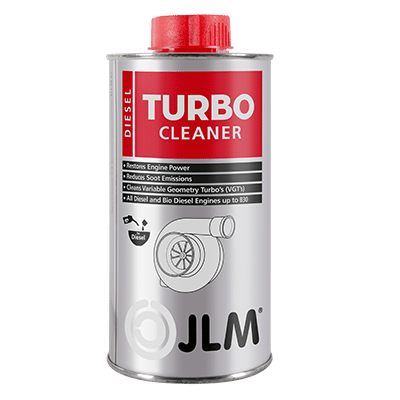Fuel injectors are a crucial component of your vehicle’s engine, ensuring a precise mix of air and fuel for optimal performance. But how exactly do they work, and why are they so critical to your vehicle’s efficiency? In this article, we will explore what fuel injectors do, the different types of fuel injectors, how to spot signs of fuel injector failure, and how to maintain them. Read on to keep your fuel injectors—and your engine—running smoothly.
What is a fuel injector?
A fuel injector is a crucial component in modern engines, responsible for delivering the right amount of fuel into the combustion chamber at the precise time. Fuel injectors work by spraying a fine mist of fuel directly into the intake manifold or combustion chamber, where it mixes with air before ignition. This precise fuel delivery ensures efficient combustion, resulting in better engine performance and fuel economy. The exact process is described below in a step-by-step guide:
- Fuel delivery: The fuel supply module sends pressurised fuel to the injectors, one for each cylinder.
- Fuel distribution: An ECU controls the fuel quantity based on air temperature, throttle position, engine speed, torque, and exhaust sensor data.
- Fuel injection: Air enters via the intake manifold and passes through the intake valves into the engine.
- Fuel mixing: The method of mixing air and fuel depends on the fuel injection system.
- Indirect injection (used in most petrol engines): Fuel is injected into the intake manifold where it mixes with air before entering the combustion chamber.
- Direct injection (common in diesel and modern petrol engines): Fuel is injected directly into the combustion chamber at high pressure, mixing with incoming air. Direct injection is more efficient, improving power, fuel economy, and reducing emissions.
- Fuel combustion: After mixing seen in the two options above, the fuel-air mixture enters the combustion chamber and ignites.
Components of a fuel injection system
The fuel injection system comprises several key components, including:
- Fuel Tank: Stores the fuel before it’s delivered to the engine.
- Fuel Pump: Directs fuel from the tank to the engine at the required pressure.
- Fuel Filter: Removes contaminants from the fuel before it reaches the injectors.
- Fuel Injectors: Spray fuel into the engine’s combustion chamber or intake manifold in a fine mist for efficient combustion.
- Fuel Pressure Regulator: Maintains the correct fuel pressure within the system, ensuring consistent fuel delivery to the injectors.
- Fuel Rail: A pipe that delivers fuel evenly to all injectors in multi-point or direct injection systems.
- Air Intake Manifold: Channels air into the engine’s cylinders where it mixes with fuel for combustion.
- Engine Control Unit (ECU): The computer that controls fuel injection timing and quantity based on data from various sensors.
- Sensors (e.g., oxygen, throttle position, air temperature): Provide real-time data to the ECU to adjust fuel delivery for optimal performance and emissions control.
The difference between diesel and petrol fuel injectors
As noted above, there are different types of fuel injection systems which are required by different types of engines for specific reasons:
- Diesel fuel injectors require a significantly higher pressure than their petrol counterparts. Diesel is heavier than petrol and takes much higher pressure to reduce the fuel into a mist that is essential for diesel engines’ high-compression combustion.
- Petrol fuel injectors, on the other hand, focus more on fuel distribution and mixture for smoother combustion, injecting fuel directly into the combustion chamber with no need for a pressurised mist.
Why are fuel injectors important?
Fuel injectors play a crucial role in an engine’s performance and efficiency. They determine how much fuel is sent to the combustion chamber and ensure it is reduced to a fine mist, which allows for a more efficient burn.
Without functioning fuel injectors, the engine could either run with too little fuel or too much fuel, leading to poor performance, increased emissions, and even engine damage.
Whether you’re driving a diesel or petrol car, fuel injectors ensure that the right fuel mixture is available for smooth, efficient combustion, helping to reduce fuel consumption and minimise harmful emissions.
Types of fuel injectors
There are several different types of fuel injectors, each designed to meet the demands of various engines and driving conditions. Understanding the differences can help you better recognise the role fuel injectors play in your vehicle, the pros and cons of each, and help you to determine where problems may arise.
Single-Point/Throttle Body Fuel injection
Single-point fuel injection, also known as throttle body injection, usually uses one fuel injector located near the throttle body to distribute fuel into the intake manifold. While it was a significant improvement over carburettors, this system is less efficient than more modern methods, as it doesn’t offer precise control over how fuel is distributed to each cylinder.
Port/Multi-Point Fuel injection
In multi-point fuel injection systems, each cylinder has its own fuel injector nozzle, placed directly into the intake port, hence the name of this type of fuel injection. This is more precise than single-point injection and allows for better fuel distribution across all cylinders, improving fuel economy and engine performance compared to single-point systems.
Sequential Fuel injection
Sequential fuel injection is a more advanced version of multi-point injection. Instead of all injectors firing at the same time, each injector delivers fuel to its respective cylinder precisely when needed. This timing improves both fuel efficiency and power by ensuring that the combustion process is as effective as possible.
Direct injection
Direct injection is the most advanced fuel injection system. In this type of fuel injection, fuel is injected directly into the combustion chamber, allowing for better atomisation of fuel and more efficient combustion. Direct injection systems are particularly common in diesel engines, but they’re becoming more popular in modern petrol engines due to their efficiency and power benefits.
Fuel injector failure: faulty fuel injector symptoms
Fuel injectors are built to be durable, but over time, they can become clogged or malfunction. Some common signs of a faulty fuel injector include rough idling, engine misfires, poor fuel economy, and increased emissions. You might also notice difficulty starting the engine, reduced power, or even a strong smell of fuel if an injector is leaking. Fuel injectors do not give much warning if they are about to fail, meaning that it is important to look out for these key signs so that you can try to resolve the issue as quickly as possible and avoid costly repairs.
Replacing a fuel injector can be expensive, typically costing between £150 to £300 per injector, depending on your vehicle and any damage to related components. However, before opting for a replacement, there’s a more affordable alternative: cleaning your fuel injectors. Using quality additives is a cost-effective solution that can prevent the need for replacement and is more cost-effective than opting for premium fuel.
Can I clean my fuel injectors instead of replacing them?
The best way to protect your fuel injectors and improve their lifespan is by cleaning them. Preventative treatment will avoid very costly injector failures. JLM offers a range of high-quality fuel injector cleaning additives that can help remove carbon deposits and buildup.
Most JLM products, such as the Extreme Clean range, incorporate some form of injector cleaning but the most effective and targeted treatment can be found using the following:
- Diesel Injector Cleaner: cleans the entire fuel system of diesel engines
- Petrol Injector Cleaner: cleans the fuel system and intake system on all old and new petrol engines including flex-fuel and E10 engines
- Petrol GDI Injector Cleaner: For all gasoline direct injection systems
- Petrol Hybrid Treatment: Complete clean & care for hybrid vehicles
For a step-by-step guide on how to clean your fuel injectors using JLM products, check out our detailed article on fuel injector cleaning.
Common fuel injector FAQs
What is the life expectancy of a fuel injector?
On average, fuel injectors last between 50,000 and 100,000 miles. However, regular maintenance and using high-quality fuel and cleaning products can extend their lifespan.
Is it worth replacing fuel injectors?
Replacing fuel injectors is worth it if they are damaged beyond repair or cleaning doesn’t resolve performance issues. New injectors improve fuel economy, engine power, and reduce emissions, making them a worthwhile investment.
Can I drive with a bad fuel injector?
Driving with a faulty fuel injector is not recommended. A malfunctioning injector can lead to poor engine performance, increased fuel consumption, and potentially cause long-term engine damage. It’s best to address the issue as soon as possible.

